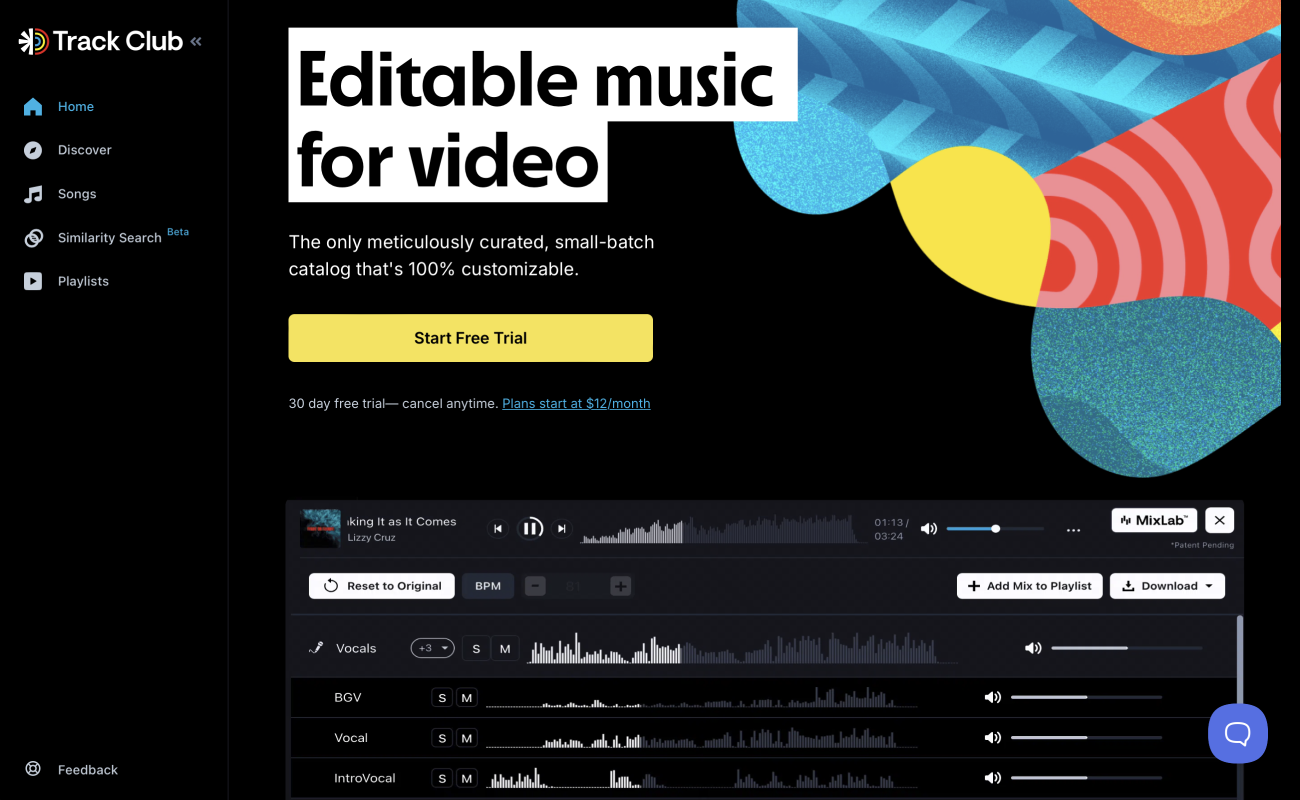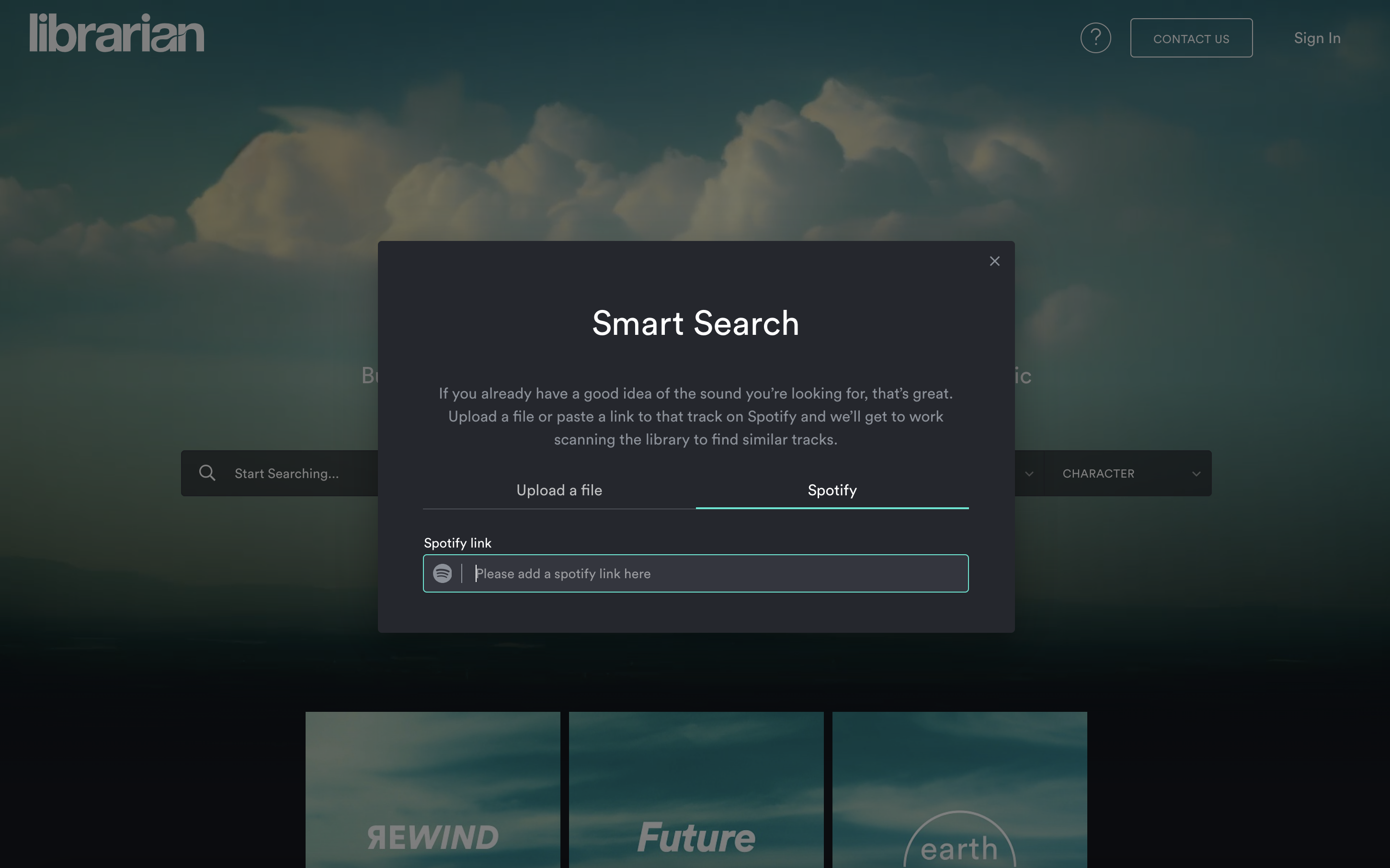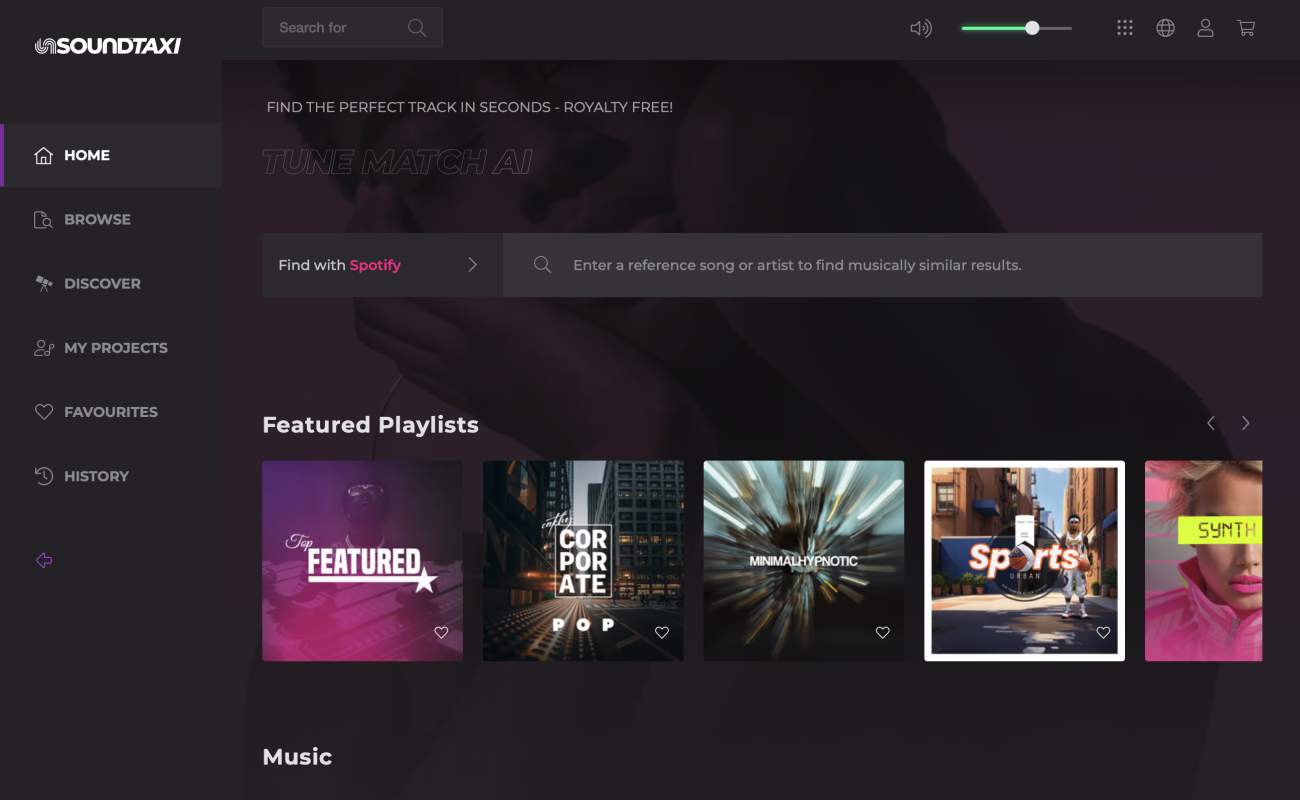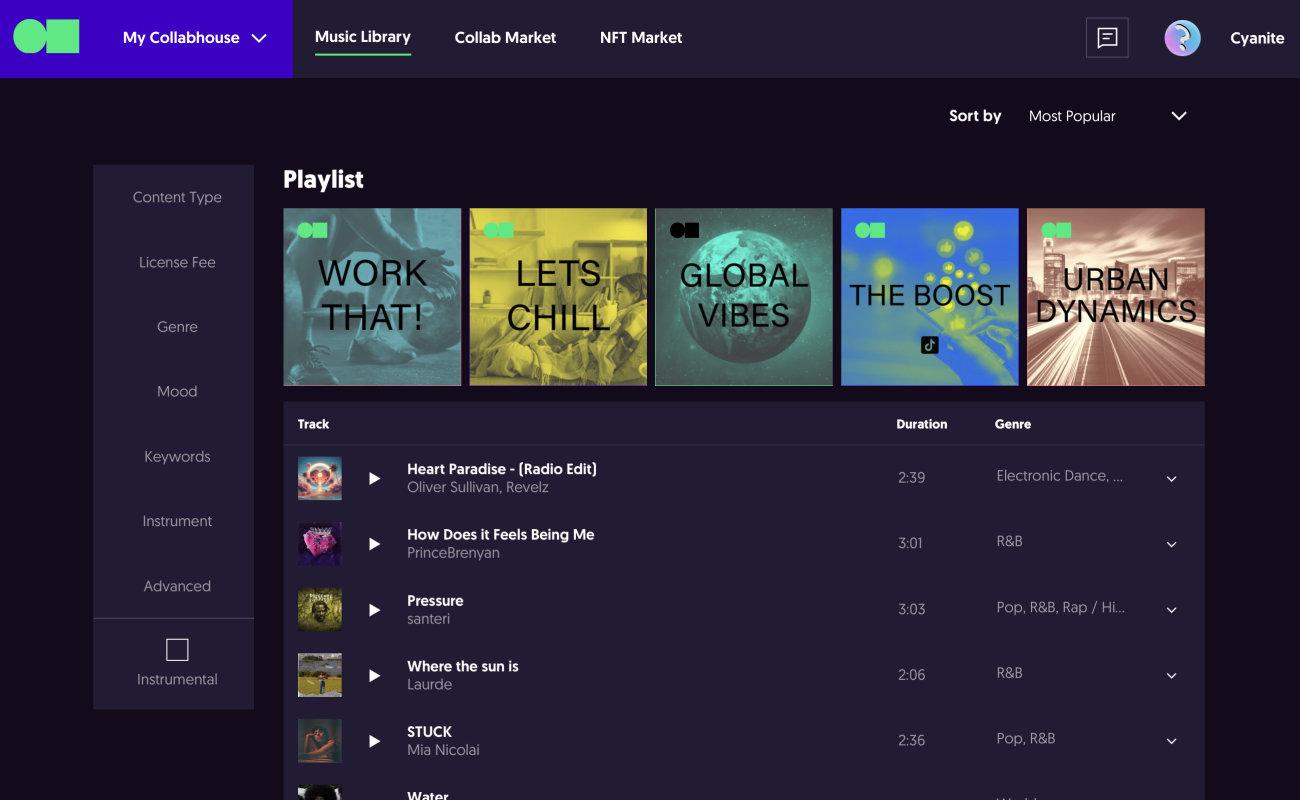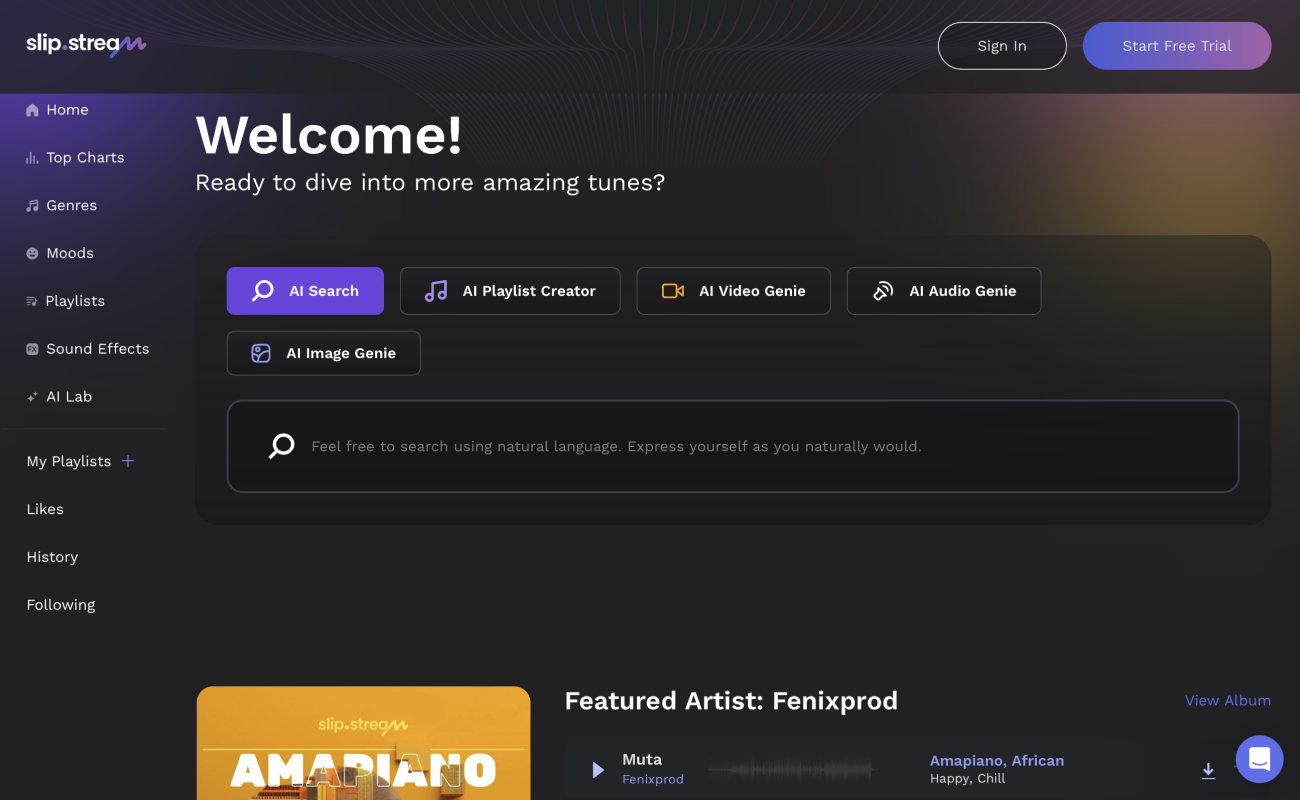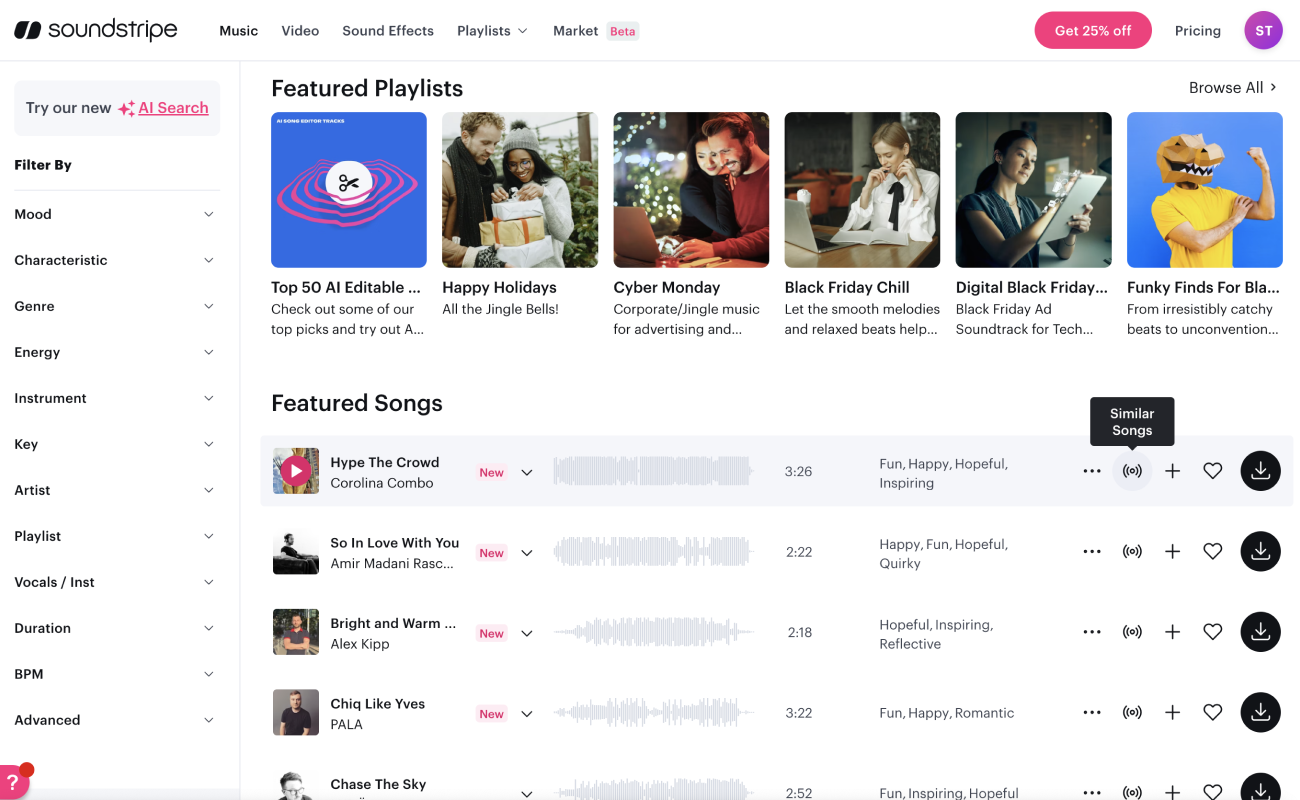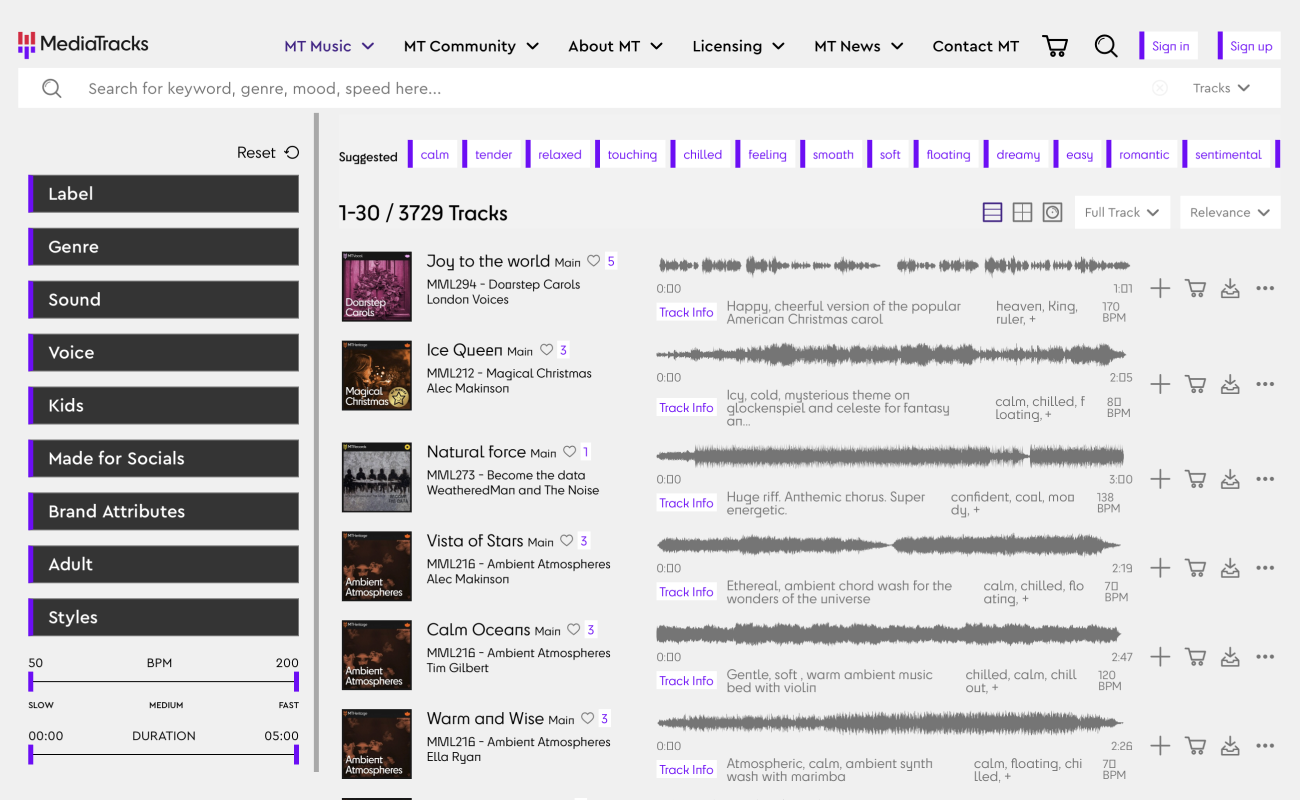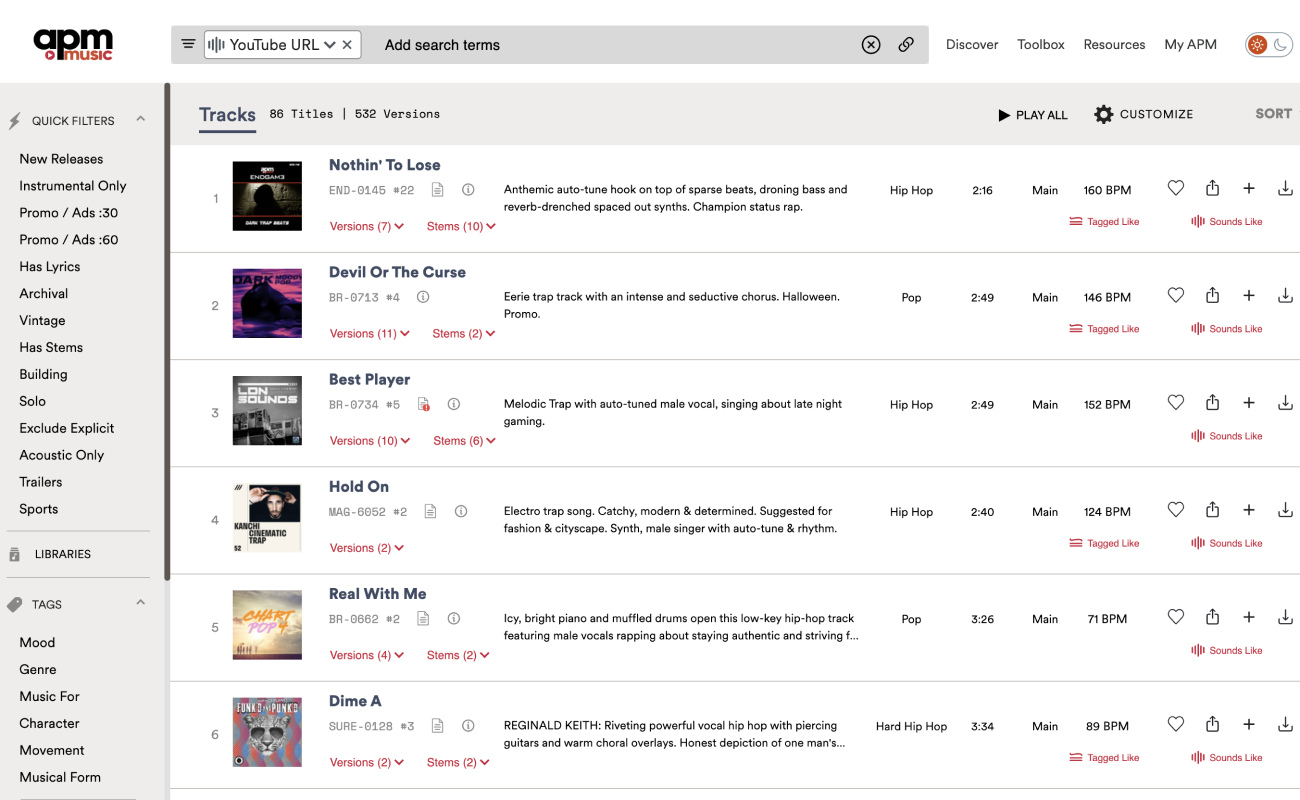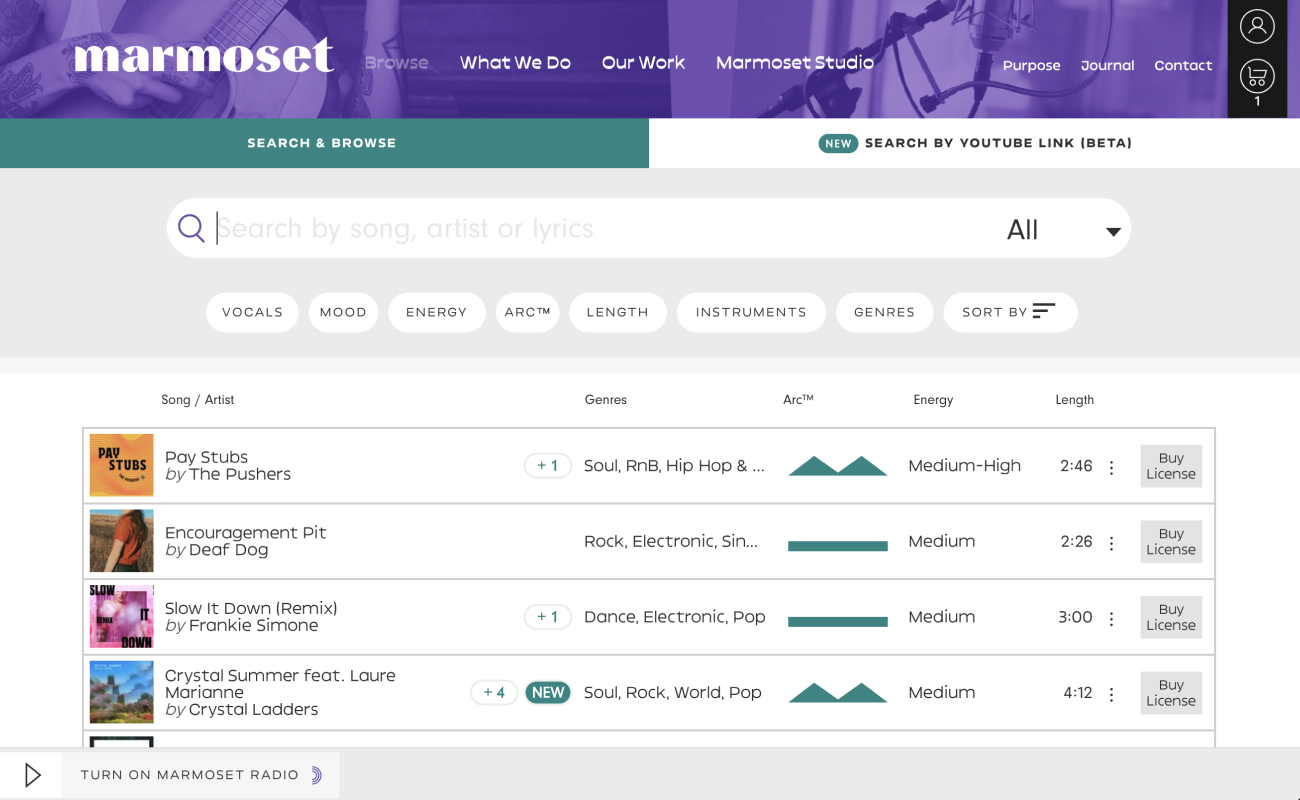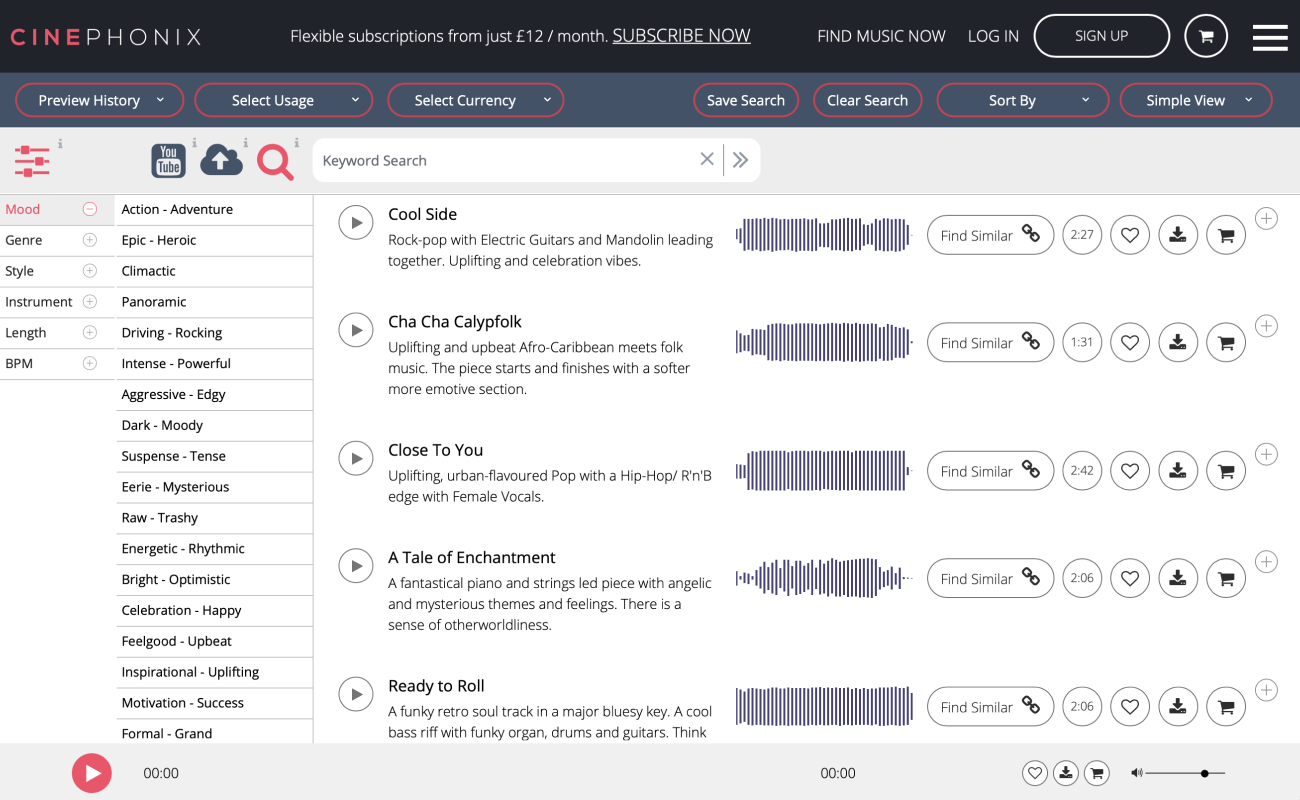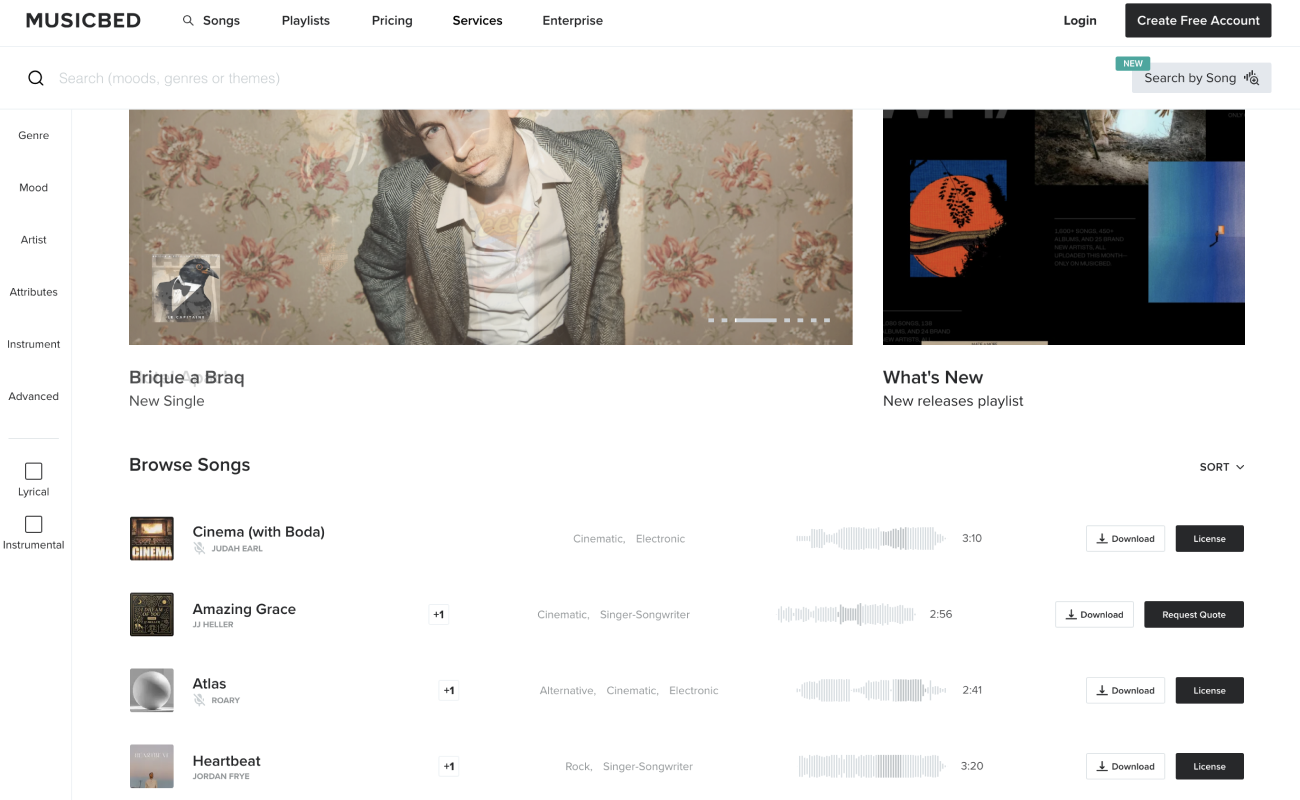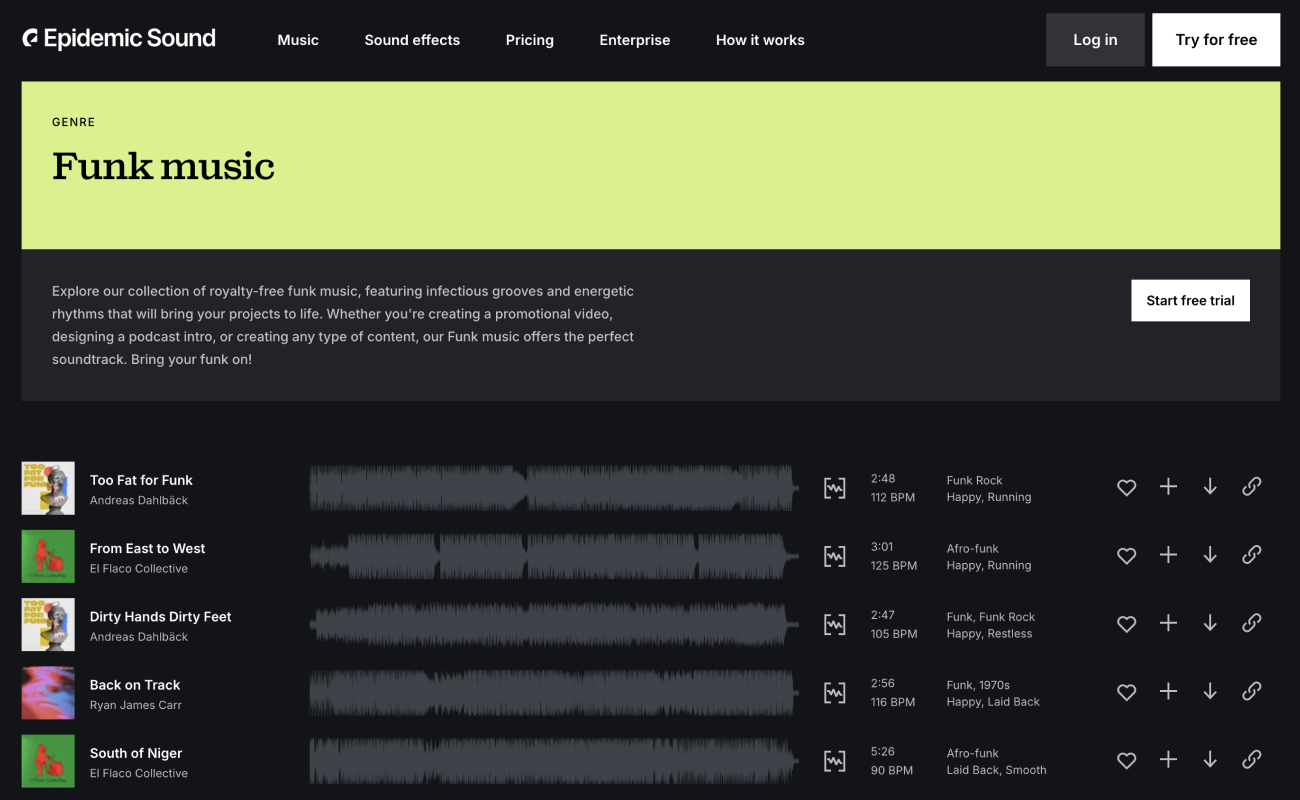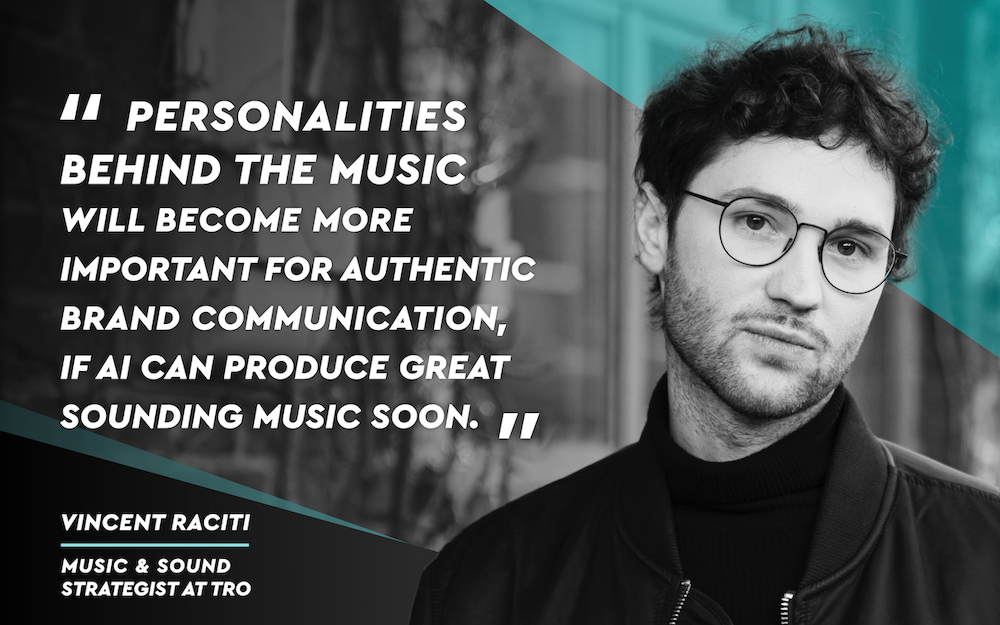
Cyanite Talks #2 with Vincent Raciti from TRO – About AI in sound branding
Learn more in this interview about what DJs and sound strategists have in common, how TRO has integrated AI into their workflows and what artists shall look out for when they want to be considered for synch deals. Enjoy the read.
Vincent Raciti: A DJ set, at least for me, includes preparation. You think about who might be expecting you in the club and to a certain extent, adjust your record selection. That doesn’t mean that I change music genre or style for a certain audience; but maybe select records with a little more or less energy. As a DJ I have a kind of ‘brand’ or ‘fixed style’ but I also work in accordance with the external factors present at each gig, and most importantly: find an empathy with my audience and keep a fascination for the music I play.
When we talk about a brand for which we want to find the right sound, we deal with similar parameters: Brand fit, consideration of the target group, empathy and creative intuition are key. Most of our clients have a huge international reach. But even at this scale, a fascination for music from our producers, creatives and strategists is of the utmost importance – 10 experts work on a large project with us. In order to always hit the bull’s eye when choosing the right sound for a brand, we have sought scientific support beyond intuition.
“Brand fit, consideration of the target group, empathy
and creative intuition are key.”
Vincent: The effect of music on people is an extremely exciting field of research that we (collaborators involved in the project) have always dealt with individually. Through past projects we already knew a lot about the effects of music – but the knowledge was fragmented. So, we started to look for models that objectively describe the emotional effects of music in order to provide orientation in the selection of music for complex projects. Because we were not satisfied with the results of the research, we joined forces with the Düsseldorf University of Applied Sciences and the University of Osnabrück.
The collective approach was soon clear to us: we conducted studies in which test persons listened to music and while doing so, tagged perceived emotions. Then we started to teach a machine learning algorithm with this data so that we no longer had to conduct new listener studies for each project. Our Research & Development Leader Michael Wittland did an amazing job as a one-man team. He optimized the algorithm to such an extent that we see it as the core of our Sonic Branding projects.
This is how it works: Together with the client, we firstly determine an emotional profile of the brand. Based on the profile and the target group, the algorithm creates a musical mood board that is used by our creatives and music producers as the basis for conception. Newly created music can be checked with the algorithm for its brand fit.
Thanks to the emotion model we use, we can talk to our clients in a very clear and direct way about the actually very subjective topic of music – this helps all parties involved in such a project enormously.
“Thanks to the emotion model we use, we can talk to our clients in a very clear and direct way about the actually very subjective topic of music.”
Vincent: Algorithms are omnipresent, increasingly in both music and in marketing. Even Spotify is in the end a user interface with a lot of algorithms that make sure that you basically don’t have to select a song in your account anymore, and still love every song that is played automatically.
Our algorithm works differently because, similar to the algorithm of Cyanite, it tries to imitate a human being and identify emotions in the music. We use it as a supporting tool in complex processes. Despite its accuracy, every result is checked by our creatives, adjusted and implemented by our music producers and artists. And this is also important to communicate, because our clients would be rightly skeptical about an algorithm that does all the creative work – and ends up producing the music itself.
The way we use and communicate the technology has given us astonishingly good experience – 5 years ago, we were already allowed to use our work in progress’ algorithm’ in large projects for our customers.
In general, I believe that it is becoming increasingly important for all companies to identify, filter and effectively use new technologies.
Vincent: It is important to be where the gatekeeper is. And these are practically the same platforms on which you present yourself as an artist one way or another: like streaming, radio and social media. I think, even if it might sound tempting now to focus on syncs, or in the short term paid placements of music in media, it’s much more crucial in the long run to work authentically on your brand awareness and artist brand. That’s how the gatekeepers become aware of you. Label, publisher, management and distribution can of course help with a network and infrastructure to pitch the music directly. Dubious offers that promise quick sync success or want to bind artists exclusively, cost money and will rarely bring happiness.
“Dubious offers that promise quick sync success or want to bind artists exclusively, cost money and will rarely bring happiness.”
Vincent: No, I don’t think any “industry” is crisis-proof. Let’s take sound branding as an example – shooting film is currently prohibited so there are no new TV or media spots that we can set to music. Also for us, this means that we’re working on fewer projects. But we see this strained situation also as an opportunity: If it is not allowed to shoot with actors, more animation is simply created – and then perhaps it will end up in our studios for dubbing. Personally, we have also gained exciting new customers during the Corona period, who have used this time to take a strategic look at the use of music and sound in respect to their brand.
Audio-only media such as podcasts and smart assistants will generate reach for brands that was previously only achieved via TV and radio. Culture and the personalities behind the music will become more and more important for authentic brand communication – especially as a distinguishing feature, if AI really can produce great sounding music soon. All in all, I see more opportunities than threats for the industry if it is open and proactive in shaping these developments together with its customers.
Thank you for taking your time Vincent! Shout-outs to the TRO gang and all the best for the upcoming projects.
For more of our thoughts on Artificial Intelligence and Music, check these out:
Ellen Allien, Roman Flügel and Dub Isotope: An AI Analysis of Techno and Drum ‘n’ Bass
Cyanite Talks #1 with Karolina Namyslowski from AMP Sound Branding
Podcast: Cyanite’s Data Scientist Roman about the potential and challenges of AI in music



